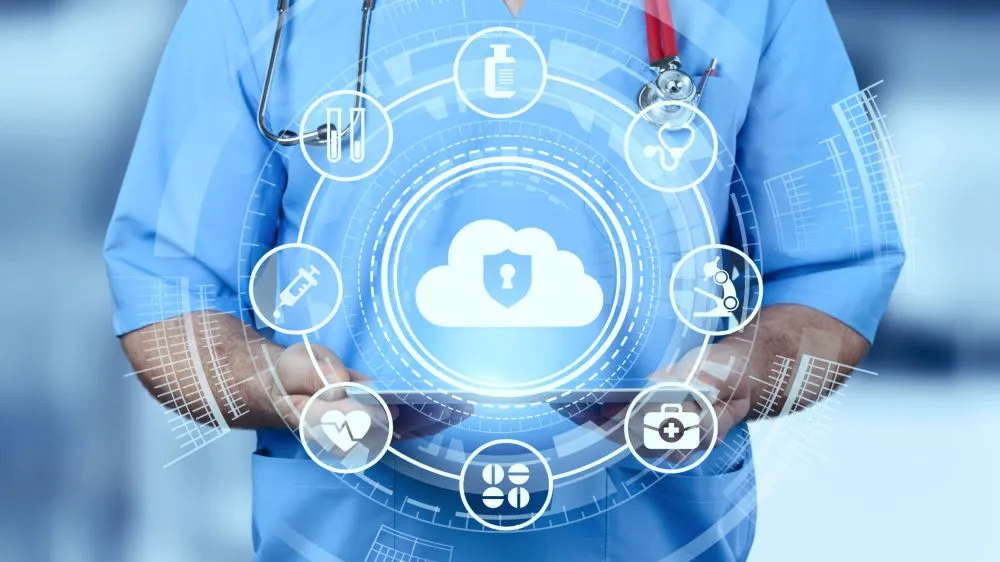Imagine this: You enter any hospital, and your personal data is immediately available to the doctor, both safely and reliably. No queue, no missing papers, and no fear of someone getting hold of it in the wrong hands. That is the magic of the digital transformation services in healthcare. However, no matter how sexy it may appear, this sensitive data is extremely difficult to keep secret and hidden. Where, then, is the way to mend it? We can simplify and divide it into easy steps with intelligent solutions that are being implemented by actual healthcare providers currently. Continue reading the blog and know more about the same.
Why Does Healthcare Data Need Extra Care?
Healthcare data does not only include names and phone numbers. It contains medical history, prescriptions, allergies, test results, including even mental health, and minor details. If this information leaks, it is not only an infringement of privacy but can also ruin lives. Following the trend away from digital customer service to the digital form, as well as to virtual care in hospitals, data flows have never been as casual and quick as they are now. However, the more flow, the greater the risk. Therefore, it is extremely essential that clients’ information is secured without making the process.
Smart Solutions that Work in the Real World
Let’s not stay in theory-land. Here are real solutions, with examples of how they’re helping:
1. End-to-End Encryption: Lock It All Down
What it means: End-to-end encryption (E2EE) is a technology that encrypts data fully until its ultimate delivery point, ensuring it remains secure after creation. The keys to decrypt content are only known by the sender and receiver; thus, not even the service provider, hackers, or third parties can intercept or read the message on its way to the destination or when stored.
Real Use Case:
A large hospital chain in Texas implemented full end-to-end encryption across its cloud services. Even internal emails containing clients’ data were encrypted. Result? Zero data leaks in 3 years and full HIPAA compliance.
Pro Tip: Always pair encryption with strong access controls so only the right staff can view the data.
2. Real-Time Threat Monitoring: Catch the Bad Guys Fast
What it means: Through a high level of AI and machine learning, Real-Time Threat Monitoring constantly searches networks and systems to detect instances of abnormal activity. It is able to detect suspicious activity, such as unauthorized access or data leakage, in real-time. It is a proactive option that will prevent cyberattacks on the spot and reduce damage and loss of sensitive healthcare data 24/7.
Suggested Visual:
A simple bar chart showing the number of attempted breaches blocked monthly using real-time monitoring.
- Blockchain for Health Records: Transparent and Tamper-Proof
Blockchain in health records stores the health records of clientss at a secured, unchangeable block. The access or any changes are saved with a timestamp, leaving an open and traceable history. Clientss would have complete control over knowing who and when checked their records and would have confidence and privacy.
Bonus Tip: Don’t Forget Staff Training
You may have the most smart technology in the world, and your staff members may click on a suspicious email, and everything goes down. Training in cybersecurity is required. Mock phishing tests and monthly refreshes are a miracle.
Stat to Share:
According to a 2024 report, 88% of healthcare breaches are caused by human error, not system failure.
How Digital Customer Service Makes It Safer?
Just imagine that chatbots, online portals, and mobile apps are now a part of contemporary digital customer service. As they are carried out properly, they are not only convenient but also safe.
Example:
One healthcare provider used a smart chatbot that verified user identity with two-step authentication before discussing any medical information. Clients got instant help, and their data stayed protected.
Suggested Visual:
An infographic showing how secure digital tools (like chatbots and portals) reduce waiting time and data risk.
Customer Experience Management = More Than Just Comfort
Next, the whole picture of Customer Experience Management (CXM) in the sphere of healthcare should be discussed. Making clients feel good is not the only thing. It is all about trust, security, and extended interaction.
How smart privacy tools support CXM:
- Clientss feel safer sharing their symptoms online.
- Faster check-ins and secure digital records = no repeat tests.
- Automated follow-ups via secure messaging platforms.
Case in Point:
A cancer care center introduced a privacy-first app where clientss could track treatments and message their care team. Clients satisfaction scores jumped by 40% in six months.
Tying It All Together: The Role of Digital Transformation Services
All such clever tools, be it encryption, AI observation, or blockchain, belong to a larger scheme, digital transformation services. The services assist healthcare organizations in modernizing, automating, and protecting all clients touchpoints.
Key Benefits:
- Quicker, swifter customer service.
- Reduced chances of violation and lawsuits.
- Fewer difficulties adhering to data protection regulations such as HIPAA and GDPR.
Final Thoughts: Security Doesn’t Mean Complicated
Keeping healthcare data safe doesn’t have to be hard. With the right digital transformation services, you can create a seamless, secure, and satisfying experience for both clients and providers.
It does not necessarily have to be complicated to have healthcare data safe. Taking the top digital transformation services, from Aestrax, you can develop an efficient, safe, and fulfilling experience for clients. Whether it is secure chatbots capable of performing digital customer service or client journey management platforms, we facilitate the entire process of serving clients. So-called smart solutions are already going to change the landscape, and the future is much safer.
